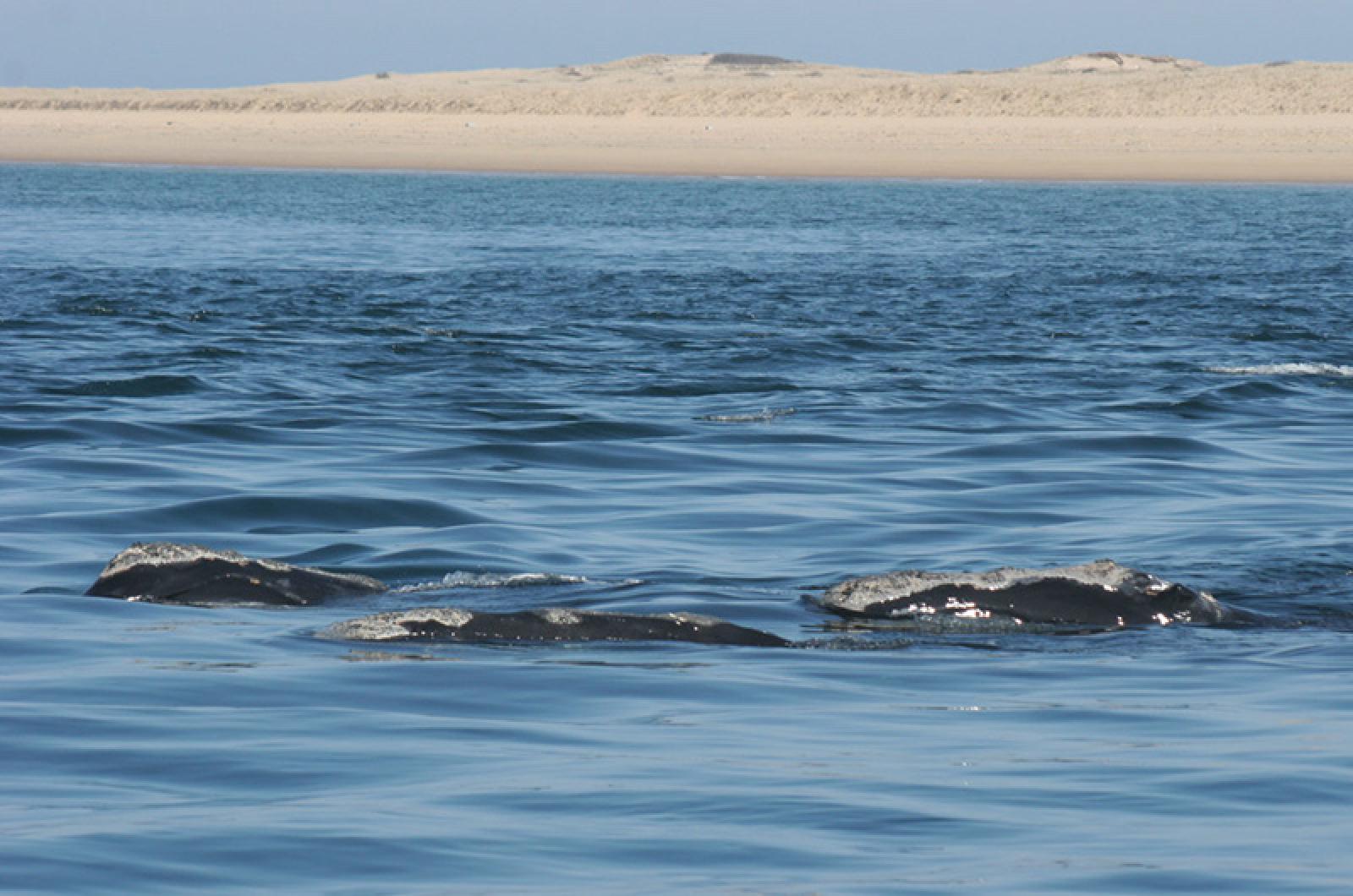The North Atlantic right whale has officially been red-listed by the International Union for Conservation of Nature — an ominous step for a species that has long teetered on the brink of extinction.
The decision by the IUCN to red list the right whale means that it is now considered critically endangered, internationally codifying a label that has been used unofficially by scientists in North America for decades. The IUCN is a Geneva, Switzerland-based conservation organization that monitors threatened species.
The right whale now joins a list of 32,000 species that are threatened with extinction according to the IUCN. The critically endangered label is the last step for a species before extinction, reserved for animals on the brink of disappearance. IUCN previously listed the right whale as endangered.”
The National Oceanic and Atmospheric Administration estimates that there are about 400 right whales still in existence, and likely fewer than 100 breeding females.
“The right whale has been heading downhill for 10 years now,” said Justin Cooke, the IUCN Assessor for the right whale and an advisor to the International Fund for Animal Welfare, in a press release. “Although there has been some progress in reducing ship strikes, fatal entanglements in fishing gear have become more frequent. We’ll lose this species unless we can continue to reduce all vessel interactions with right whales and ensure that only whale-safe fishing gear is used.”
Criteria for determining whether a species is critically endangered include a greater than 80 per cent reduction in population or over the past three generations, severe geographic range limitations and/or quantitative analysis showing the probability of extinction in the wild is at least 50 per cent within ten years or three generations.
Critically endangered species are “considered to be facing an extremely high risk of extinction in the wild,” according to IUCN’s criteria.
Within the United States, right whales were already in the highest risk category possible under both the Marine Mammal Protection Act and the Endangered Species Act. But a spokesman for NOAA said on Tuesday that the international red-listing of the right whale could help international advocacy for a species known to transit entire oceans.
“It creates awareness,” Ms. Ferreira said. “It’s good to get the international confirmation that the species is infirm, which is great.”
Right whales have recently been spotted in both American and Canadian waters, and congregate in large numbers south of Martha’s Vineyard and Nantucket. Last year, over more than 100 whales were spotted frolicking in Cape Cod Bay.
But since 2017, the species has undergone what is termed an unusual mortality event, when there were no recorded whale calf births and nearly 20 deaths, most of them from fishing gear entanglements or vessel strikes.
This year, NOAA reported 10 new calf births and one death. The death occurred just three weeks ago off the coast of New Jersey. Another calf was also severely injured in a vessel strike earlier this spring, although its condition now remains unknown, according to Ms. Ferreira.
The pandemic has also upended many of NOAA’s traditional whale surveying efforts. Because of tight space restrictions, for instance, scientists can’t use biplanes to scan waters around the Vineyard for the species, forcing them to cancel aerial surveys. The surveys are used to institute vessel speed restriction zones to help protect the animals.
Although red listing can spur international action to save species, NOAA and Canadian officials were already required by law to work on behalf of right whale conservation under the Endangered Species Act and Marine Mammal Protection Act. The organization is currently working to institute a rule that would decrease the risk of whale entanglement by 60 per cent and plans to issue a report on vessel strikes later this year.
Despite those efforts, the unusual mortality event continues, with 41 whales determined to be dead or seriously injured over the past three years. Ms. Ferreira said that while the red listing wouldn’t give NOAA any additional conservation leverage, it helps show how fast the clock is ticking for the species.
“This really creates a sense of urgency,” she said.







Comments (2)
Comments
Comment policy »